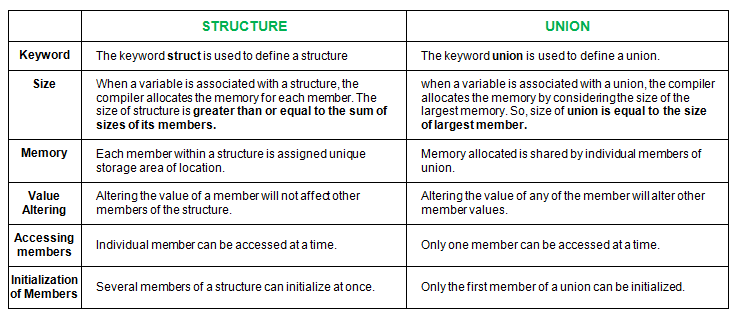
Unions
A union is a special data type available in C that allows storing different data types in the same memory location. You can define a union with many members, but only one member can contain a value at any given time. Unions provide an efficient way of using the same memory location for multiple purposes.
Defining a Union: To define a union, you must use the union statement in the same way as you did while defining a structure. The union statement defines a new data type with more than one member for your program. The format of the union statement is as follows:
union [union name]
{
member definition;
member definition;
…
member definition;
};
Similarities between Structure and Union
- Both are user-defined data types used to store data of different types as a single unit.
- Their members can be objects of any type, including other structures and unions or arrays. A member can also consist of a bit field.
- Both structures and unions support only assignment = and sizeof operators. The two structures or unions in the assignment must have the same members and member types.
- A structure or a union can be passed by value to functions and returned by value by functions. The argument must have the same type as the function parameter. A structure or union is passed by value just like a scalar variable as a corresponding parameter.
- ‘.’ operator is used for accessing members.
Differences

You may also like: Program Using With Switch

Leave a Reply